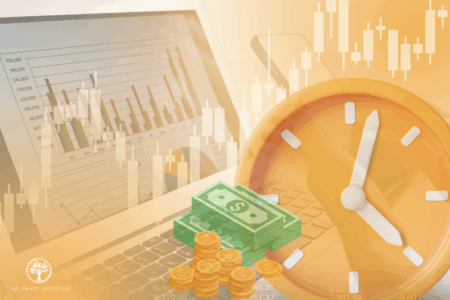REITs can be categorised into many sub-sectors such as industrial, commercial, and retail
The portfolios of diversified REITs contain a mixture of at least two property sub-sectors.
One example is CapitaLand Integrated Commercial Trust (SGX: C38U), which owns a mix of retail, office, and integrated development properties.
When COVID-19 first hit, there were six diversified REITs listed in the Singapore Exchange Limited (SGX: S68).
Since then, the number has increased to nine, constituting 22.5% of listed REITs.
The birth of new diversified REITs can happen due to mergers between two sector-specific REITs.
One example is the merger of office-focused Frasers Commercial Trust and industrial-specific Frasers Logistics & Industrial Trust to form Frasers Logistics & Commercial Trust (SGX: BUOU).
Diversified REITs are larger
Over the years, REITs have been diversifying their asset mix to buffer the adverse impact of economic shocks while simultaneously riding the tailwinds across a multitude of segments.
This rationale can be further broken down into several reasons.
We analyse these from the perspective of retail investors, starting off with the pursuit of scale, as measured by market capitalisation.
Indeed, diversified REITs have higher market capitalisations than REITs of other sub-sectors, averaging S$4.3 billion with a close second being industrial REITs at S$3.9 billion as of March 2023.
Larger REITs can enjoy multiple advantages such as economies of scale and bargaining power to negotiate favourable leasing terms.
In turn, these attributes should benefit REITs as such factors translate into higher revenue and net property income.
Less risky on certain aspects
Having a larger asset base also increases the amount of debt headroom available to these REITs.
To put this to the test, we look at the gearing ratio, which is calculated by dividing REITs’ debt by their total assets.
Diversified REITs have the second-highest gearing at 38.5% measured as of March 2023, which while far from the aggregate leverage limit of 50% set by the Monetary Authority of Singapore, suggests they are still more leveraged than non-diversified REITs.
In terms of risk, holding properties across several sub-sectors should reduce concentration risk.
Apart from sector composition, we also examine geographical diversification.
We use the following proxy: REITs with at least 10% of their properties by asset value spread across two countries are deemed to have some geographical diversification.
By this definition, diversified REITs are only second to industrial REITs in terms of spreading out their country exposure.
More resilient against losses
All shareholders invest in hopes of enjoying returns, whether in the form of rising dividends or capital gains.
Capital gains are achieved by selling the stock at a higher price than what you bought it for.
Hence, valuation matters.
In March 2023, diversified REITs were valued at an average of 0.8 times on a price-to-book basis, which sits on the lower range of 0.6 times for office REITs to 1.3 times for healthcare REITs.
This suggests that diversified REITs are conservatively valued considering their supposedly lower risk.
Even though distribution yields may be skewed upwards due to falling unit prices, the REIT Association of Singapore (REITAS) nevertheless listed this metric as a performance measure.
Diversified REITs provide relatively low distribution yields of 6.7%, ahead of only the hospitality and specialised sub-sectors.
To screen out the effect of share price movements, it may be more helpful to track the absolute distribution per unit (DPU) throughout the years.
Next, we assess the capital gains portion by comparing shareholder returns over various durations.
REITs generally posted losses across the board over the past one month, one year, and three years.
The silver lining is that diversified REITs have been outperforming most other sub-sectors in terms of returns.
For example, only healthcare REITs managed to yield higher returns than diversified REITs in the past month.
Over longer time horizons of one and three years, diversified REITs posted modest losses of 4.4% and 1.5% respectively.
By comparison, sub-sectors such as office and specialised REITs saw their share prices slip by over 20% in the past year due to a combination of high inflation and soaring interest rates.
Get Smart: Diversification has its benefits
All in all, there are advantages to owning diversified REITs.
It boils down to understanding your investment goals which govern risk appetite and investment horizons.
Lower concentration risks and broader geographical diversification associated with diversified REITs could appeal to more risk-averse investors.
Of course, investors should pair these metrics with other indicators such as weighted average lease expiry (WALE), occupancy rates, and tenant mix etc. to get a fuller picture.
Diversified REITs’ muted losses compared with other REIT segments may also provide some comfort.
For the more aggressive investor who has strong conviction in certain investment themes such as hospitality REITs riding on border reopening tailwinds, being overweight on that sub-sector could be preferred to holding diversified REITs.
Regardless, REITs are a good option for portfolio diversification due to their low correlation with other asset classes so this makes for a compelling case to own them.
Not sure where to park your money in 2023? Give dividend stocks a try. You don’t need a lot of capital to start a stream of passive income. Our latest guide will show you how to invest and where to find the juicy dividends in SGX. Click here to download the report for FREE.
Follow us on Facebook and Telegram for the latest investing news and analyses!
Disclosure: Tan Ke Xuan does not own shares in any of the companies mentioned.





